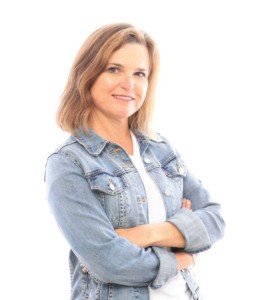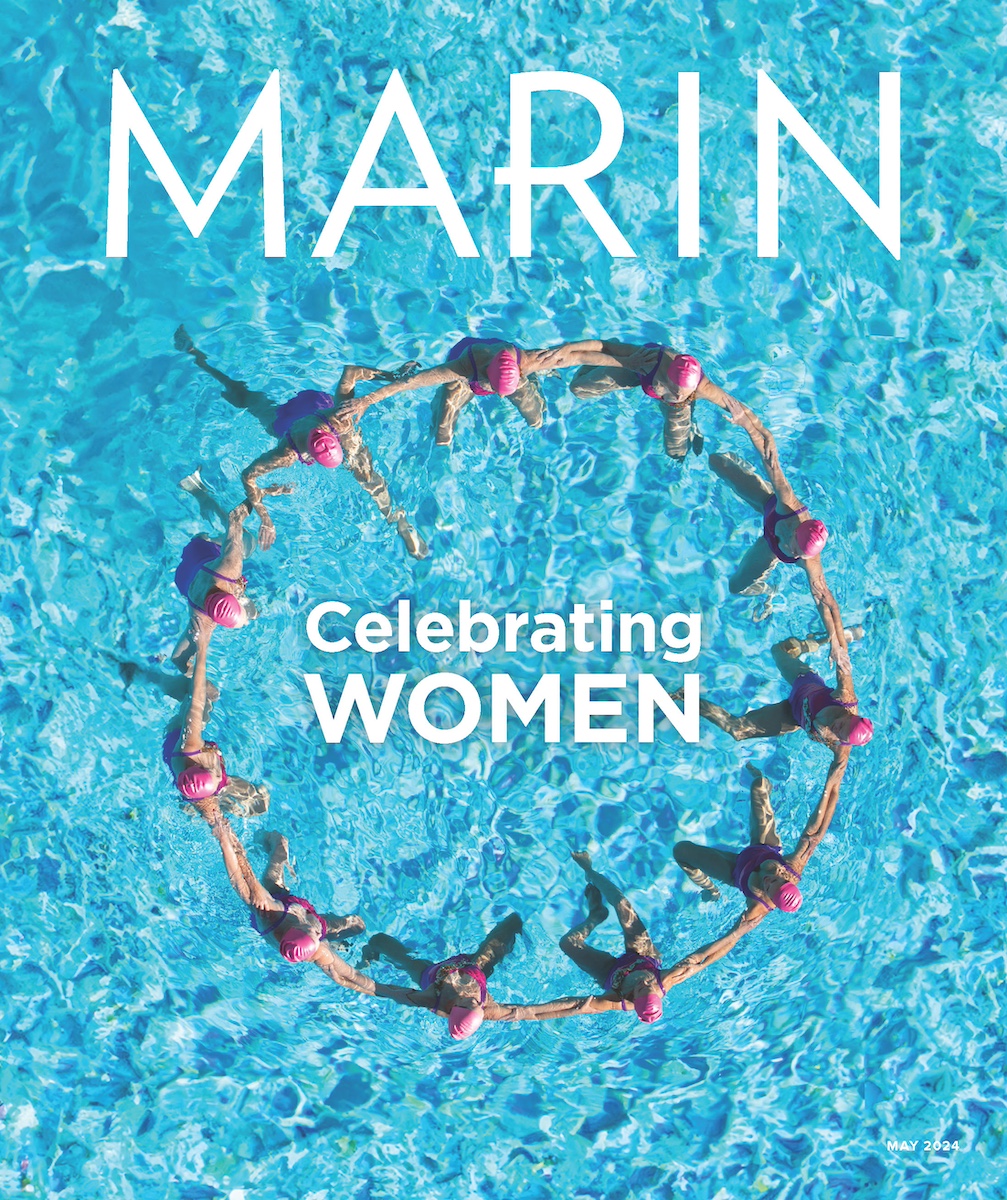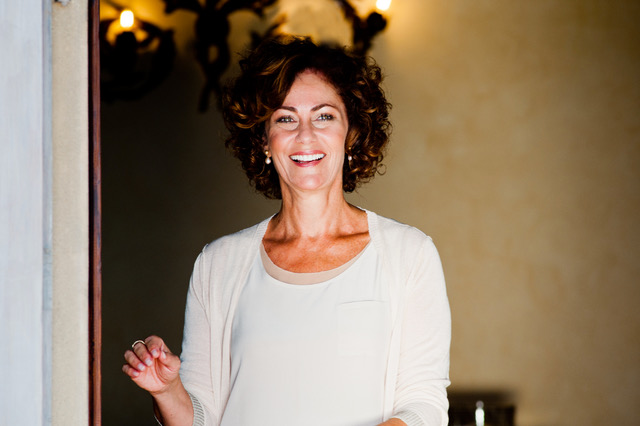On January 30th, 2021, Barbara Waxman will be conducting a Covid-style TEDx talk at Jackson Theater at Sonoma Country Day School. In other words, no crowds, besides the camera crew, and the expected thousands of people at home. She will be debunking the myth of the midlife crisis. Much like the widely held belief, that MSG causes headaches and bloating, the concept of the midlife crisis, was invented by a white male psychoanalyst, who happened to hit a nerve at time when our culture was beginning to seriously idealize youth. Tune into her talk to learn more about why this idea flourished — and has been used as an excuse for many a Porsche purchase — or more importantly if you are feeling a bit of anxiety yourself around the question, “what now?”
This is the second time we have taken some time to chat with Barbara Waxman. The first was back in 2016, when she was becoming well known in her field as a coach for promoting the concept of middlescence. Since this interview, Waxman and her husband, Scott, moved to Italy for an adult gap year, where, as she explains, they both repotted, which proved to be a right move for her career. The time away gave her the ability to re-focus and align her energies to be in sync with her sense of purpose.
Waxman also credits her bi-coastal influences for her success as a coach. She’s lived in Northern California for over thirty years, where she has learned how to be flexible and entrepreneurial, but at the end of the day, she’s a New Yorker and is driven to guide her clients to get the results they crave as a “loving truth-teller” in that direct “don’t BS me” way — cultivated so successfully by those in the big apple.
While the TEDx talk is exciting, we figured that we also would garner a bit of her wisdom for our readers, while we had her attention. Read on for her story, and how she offers insight into how you can be the best version of yourself in 2021.
Why a TEDx talk?
I am on a mission and have been for years to shine a light on the anxieties and opportunities associated with the part of life between our mid-40s to our 70s. I have always been intrigued by the wisdom gleaned in my youth from the elderly residents at the facility where my father volunteered as a physician. I followed suit by working there during my college years. Years later I became a gerontologist and then a coach. I learned that midlife can be enormously creative; a time to reassess choices you may have made in your 20s and 30s that may no longer be serving you, and with a long life ahead, it’s not too late to make changes. In other words, midlife is not a time of crisis, it’s an opportunity.
What are the main reasons clients come to a coach, as opposed to a therapist or consultant?
It’s a common and extremely important distinction. The International Coach Federation defines coaching as a “thought-provoking and creative process that inspires clients to maximize their personal and professional potential. Coaches honor the client as the expert in his or her life and work and believe every client is creative, resourceful and whole.” When describing the distinction between coaching and therapy I have found it most useful to think of it this way: we all have emotional, psychological, habitual baggage that we carry. The older we get, the more baggage we have. Even those who are highly evolved and self-aware have baggage. A therapist helps you open up your bag, see what is in there and deeply examine where it came from and how to work with it. So long as you can recognize your baggage and lift it (so to speak) into the overhead compartment, a coach can support you in taking it (your whole self) on the road to create the future you desire.
As an executive coach I work with entrepreneurs, corporate leaders, non-profit and community change agents. The most common coaching questions have to do with how to bean authentic leader, how to create inclusive and high performing teams and how to do so while also feeling successful at home. I am also regularly approached by leaders looking to build an on-ramp for someone as they create an off-ramp for themselves. Invariably, our first session is spent sitting at the proverbial feet of their life and listening deeply to the lessons learned.
Amidst all of the noise of the pandemic, elections and most of all, forced isolation, how do we work towards becoming the best versions of ourselves?
Have boundaries. One of the challenges I am being hired for all the time from companies is for employees who don’t have a home office set up and they might have their kids at home. Mothers are the ones who are shouldering most of the stress, even if they are married and there are fathers at home. One way to create boundaries is to create a “red light” or “green light” sign, giving kids, spouses and roommates a signal for when to leave you alone.
Make friends with yourself. So often we can go through a day without connecting with ourselves. Simple ways to do that is using an app like Headspace, a meditation tool or just sitting quietly and imagining the oxygen from your breath flooding into your toes, to your knees and so on. Another effective way to connect with yourself is to greet each new day with a ritual of thinking of three things you are grateful for. It really makes a difference!
Continue to grow. Duolingo is going through the roof right now. I’m studying Tai Chi, I was recently on a Zoom call with over 180 people, it was a great reminder that there are wonderful people all around the world.
Connect. While research proves that older people do better in terms of handling the anxiety of being alone, they are more often isolated. Find the time to connect with a neighbor, call them or even drop off flowers at their door. If you reach out to someone today, you’ll be better for it and feel less isolated. This is the secret sauce — when you give you feel better.
What are the most common stuck points?
With terms looming like midlife crisis, people naturally get stuck. A lot of my clients feel they have been victimized by ageism and then find themselves — buying into ageism and holding back on moving forward. For my corporate clients, I’ll ask,“Would you hire yourself?” Often the response is, “No, there are too many things I need to learn, and I don’t have time.” Really? I also experienced a benign form of ageism many years ago with a young doctor, who after a couple years, of listening to my symptoms of fatigue, said, “Look at all you do, If I were your age, I would be tired too.” Turns out I had a thyroid condition, and now that It’s been treated, I feel great. Point is we need to be careful for the limitations we and society put on us.
Last words?
Make friends with change. The tongue-in-cheek expression that “there is nothing as certain as death and taxes” is incomplete. Change is the only constant we can depend on and if 2020 has taught us anything — your ability to understand your relationship with change, is a good indication of where your work needs to start. Are you someone who knows this is tough, but we can survive it? Or are you someone who gets extremely anxious and can’t even think about change? Seek the help you need to get comfortable with change. It is coming at us faster and faster and it is not likely to change in 2021.
5 Essential Elements
The essential elements Barbara Waxman uses for her corporate and private clients.
Exercise & Nutrition
Leaders with the energy and focus to get things done consistently monitor their health, eat a diet that is right for them, exercise regularly, and listen to their bodies.
Rest & Renewal
Grounded, resilient, emotionally consistent leaders get the sleep they need and engage in rituals they find centering. They schedule technology-free time on a consistent basis and understand that they need to stop occasionally and disconnect from the busy-ness of life.
Focus & Growth
Productive people don’t multitask because they understand it’s inefficient. Instead they bundle tasks and prioritize the most difficult and time-consuming activities. They make a point to stretch their minds and develop creative pursuits.
Joy & Passion
Balanced, successful leaders train themselves to find meaning and joy in the small moments of life. They align their values with their actions and try to make a difference in small and large ways. What they find is that joy and passion act like viruses, happily transmitted to those around them.
Time & Place
People with energy guard their time, know when to say “no” and when to jump in. They take breaks from their work approximately every 90 minutes to stretch, walk around, and re-charge for the next challenge.
How to Help:
For more ways to support local businesses, go here.
More from Marin:
- 5 Ways to Incorporate Sustainable Seafood into Your Diet
- Two Women Working for Positive Change
- 5 California Wine Country Recipes — Plus Wine Pairings

Mimi Towle is a Marin-based writer and editor. Currently the editor of Marin Magazine, she enjoys the various perks of her job, which include meeting chefs, winemakers, and inspiring characters. As a volunteer philanthropic advisor for the EACH Foundation, she focuses on needs in her home state of Hawaii. Some of her favorite nonprofits include City Beat, Hawaii Land Trust, and University of Hawaii Cancer Center.


